Vietnam, a country rich in natural resources, is not only famous for its stunning landscapes but also a convergence of unique traditional craft villages. Among these, gemstone carving villages always attract special attention for their sophistication, meticulousness, and cultural and economic value. Let’s explore these hidden “gems” with “Du Lịch Khắp Thế Gian” (Travel Around The World), places where inanimate stones are imbued with soul, becoming unique works of art.
For generations, the gemstone carving profession has been associated with the lives of Vietnamese people, especially in areas with abundant gemstone resources. This profession not only provides a stable source of income but also contributes to preserving and promoting the traditional cultural values of the nation.
Luc Yen – “Ruby Kingdom” and the Art of White Stone Carving
When mentioning gemstone carving villages in Vietnam, Luc Yen, Yen Bai, cannot be overlooked. This place is known as the “ruby kingdom” with large reserves of high-quality gemstones. Besides ruby, Luc Yen is also famous for white stone, a unique type of stone used to create many exquisite fine art products.
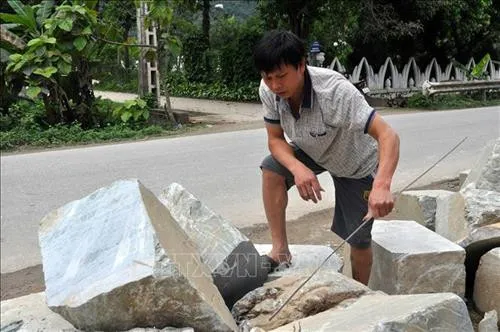
The fine art stone carving village in Luc Yen is mainly concentrated in Chuong village, Tan Linh commune, right at the gateway to Yen The town. The first fine art stone carving establishments were formed here more than 15 years ago, creating a familiar address for stone carving artisans.
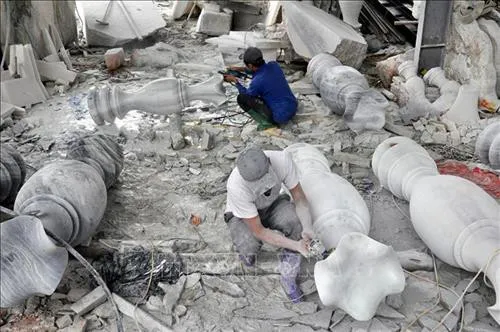
Under the talented hands of Luc Yen artisans, rough, crude white stones have been transformed into unique fine art products, favored by customers both domestically and internationally. Stone art products here are very diverse, ranging from Buddha statues, mascots, reliefs to interior decoration and feng shui items.
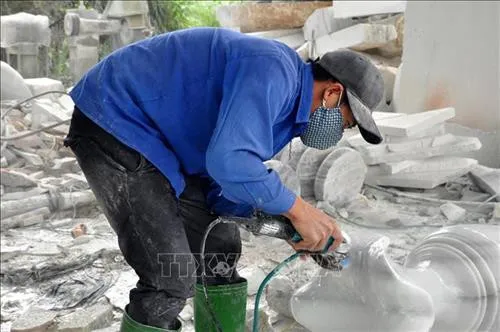
Mr. Luu Dinh Hoanh, one of the pioneers who “gave birth” to this fine art stone village, shared: “Stone art products, especially spiritual items, require skillful hands, creativity, and a truly pure soul. Artisans need to have a high level of skill to create products that converge tinh hoa (essence) to be placed in temples and pagodas.”
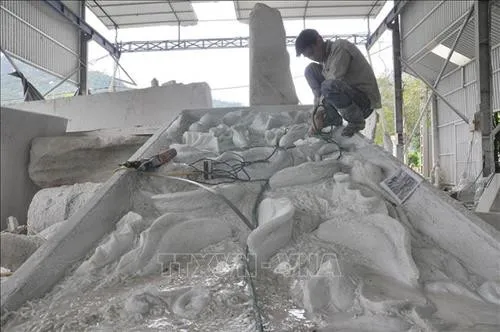
The art of fine art stone carving requires a combination of manual labor, intellectual labor, and an artistic soul. Artisans must have a keen aesthetic eye to recognize the hidden beauty in each rough stone block.
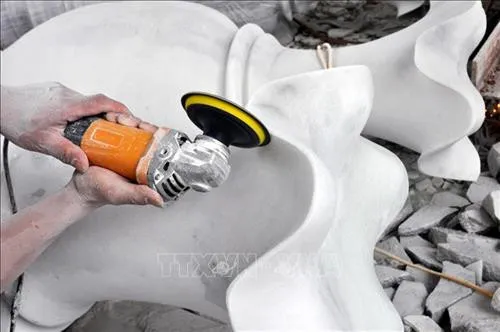
Today, with the support of machinery, Luc Yen stone carvers have reduced the burden of physical strength and have more time to be creative. However, to create a true work of art, artisans still have to go through many meticulous stages, from sketching, shaping, rough carving, fine carving to polishing and finishing.
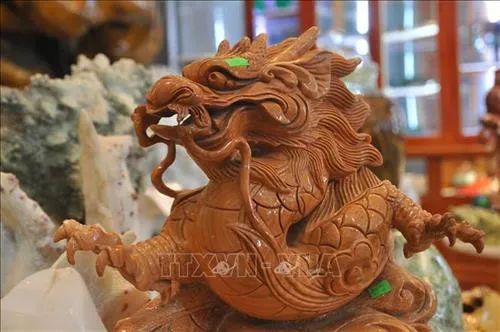
Mr. Tran Van Dinh, a fine art stone carving artisan in Chuong Village, shared: “When carving, you need to focus and breathe life into the stone block to create good, satisfactory products. Artisans like me always want to create products that customers feel satisfied with, appreciate the artistic beauty and quality.”
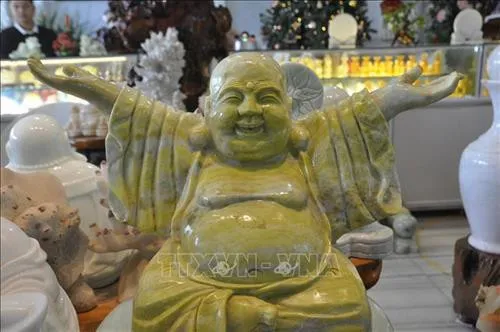
Luc Yen fine art stone products are increasingly improved in quality, design, and sophistication, not inferior to other famous craft villages in the country. This has attracted the attention of many customers both domestically and internationally.
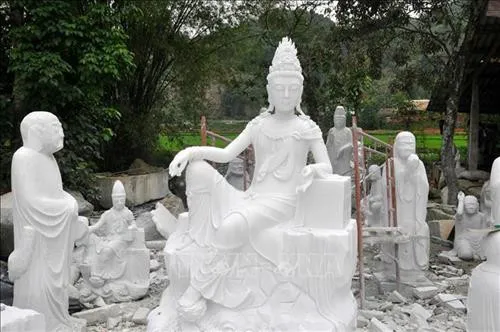
Mr. Nguyen Ngoc Son, Head of the Economic – Infrastructure Department of Luc Yen district, said that the district is very interested in building and developing craft villages, especially fine art stone carving and gemstone painting, to promote the local strengths and create a stable source of income for people.
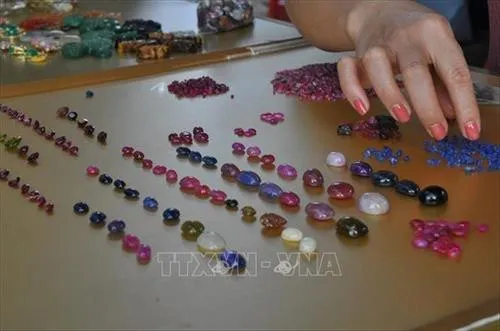
With the diversity of types, designs, and colors, Luc Yen fine art stone has become an attractive destination for those who love the beauty of gemstones and want to learn about the traditional crafts of Vietnam.

Da Nang – Non Nuoc Fine Art Stone Carving Center
Besides Luc Yen, Da Nang is also a famous fine art stone carving center in Vietnam. Non Nuoc stone village, located at the foot of the Marble Mountains (Ngu Hanh Son), has a history of more than 400 years. This place is famous for marble sculptures, imbued with Buddhist culture and folk beliefs.
Other Craft Villages
In addition to Luc Yen and Da Nang, Vietnam also has a number of other gemstone carving villages, such as:
- Quang Nam: Famous for products made from granite and marble.
- Binh Dinh: Specializing in crafting products from basalt stone.
- Thanh Hoa: Has the craft of carving blue stone and white stone.
Sustainable Development of Gemstone Carving Villages
To preserve and promote the value of gemstone carving villages in Vietnam, comprehensive solutions are needed, including:
- Protecting gemstone resources: Rational exploitation, environmental protection.
- Improving skills for artisans: Organizing training classes and technical workshops.
- Investing in technology: Applying advanced techniques to production.
- Building brands: Promoting Vietnamese gemstone products in the international market.
- Developing craft village tourism: Combining tourism with cultural experiences and shopping.
Conclusion
Gemstone carving villages in Vietnam are not only places that produce unique fine art handicrafts but also places that preserve and promote the traditional cultural values of the nation. Preserving and sustainably developing these craft villages is the responsibility of the entire community, contributing to enriching Vietnamese cultural identity and promoting socio-economic development of the country. Are you ready for a journey to discover the “gems” of Vietnam? Join “Du Lịch Khắp Thế Gian” (Travel Around The World) to experience interesting and meaningful things at these gemstone carving villages!